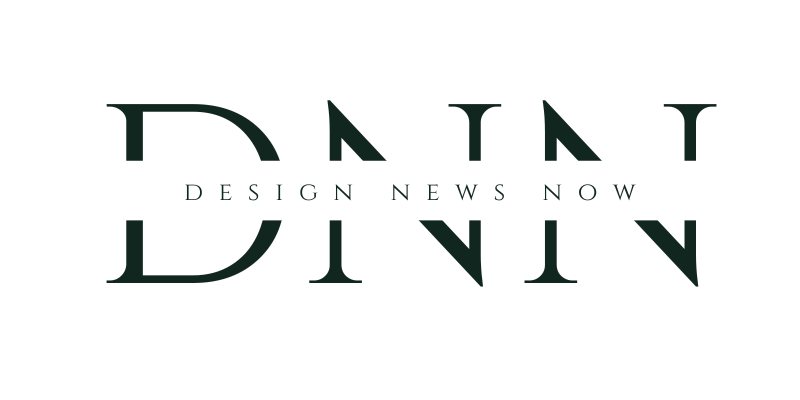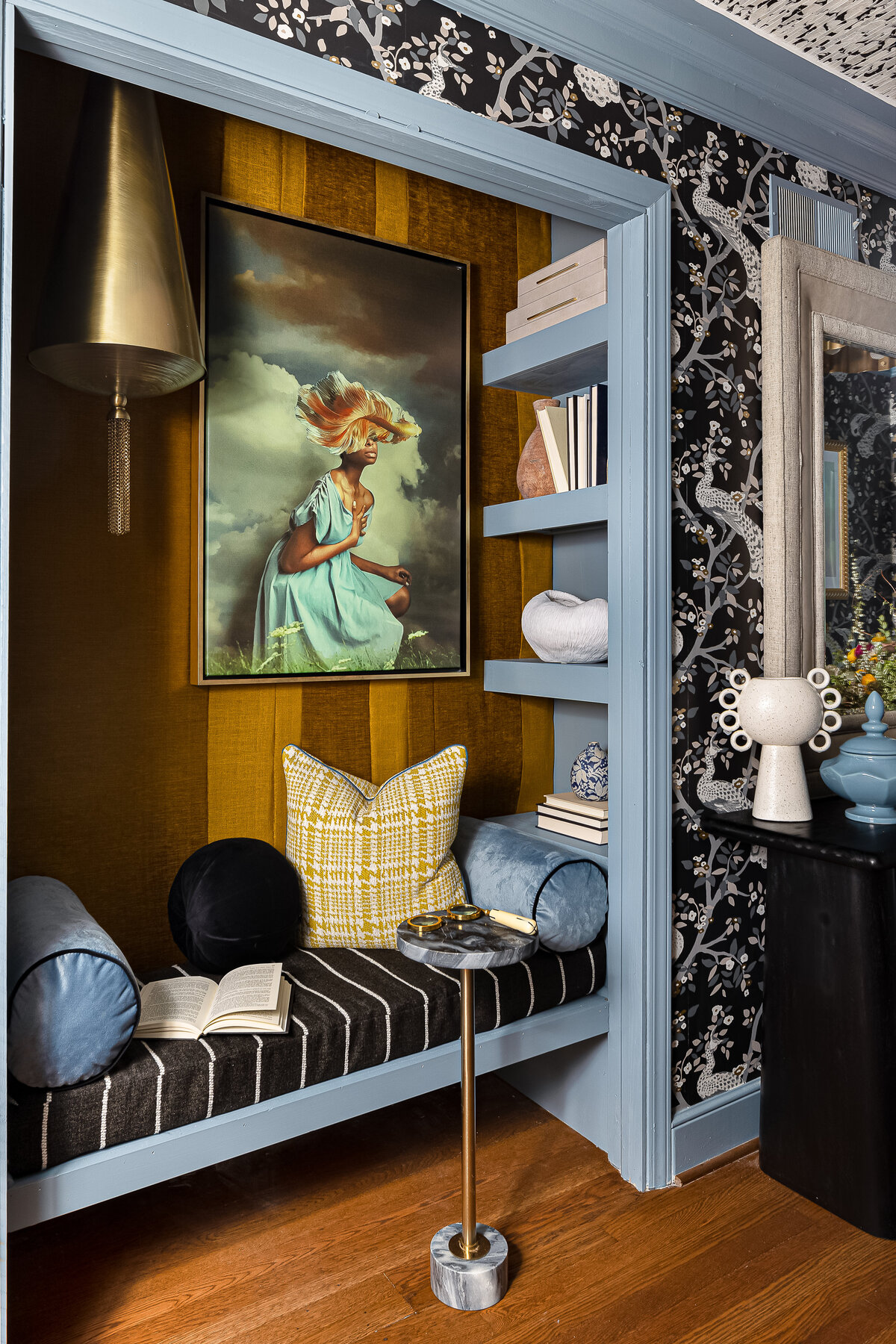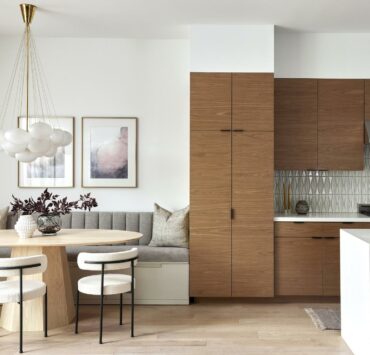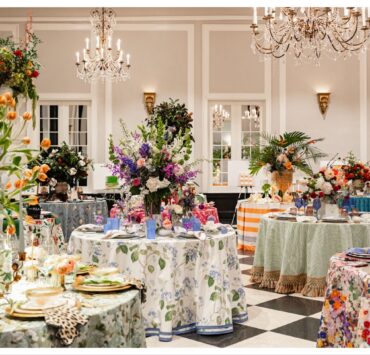There are myriad ways to increase your visibility as a creative professional — and we’ll get to specifics in a minute. But before you bump up your marketing budget, take on a showhouse or sign a brand partnership deal, you need to know who you are, according to designer Marie Cloud, founder of Indigo Pruitt Design Studio, based in the Charlotte, North Carolina, area.
“There’s such a beauty in finding out who you are … and being authentic to who you are before throwing yourself out there to the world,” Cloud said. “What do you bring to the table? How are you wired? What are your gifts and your talents? What are the things that set you apart — not only in the market but just as a human?”
Cheryl Luckett, founder of Dwell by Cheryl, also based in Charlotte, agrees with Cloud. Before crafting a marketing plan, you need to create a vision and hone an overall strategy for your business — then tackle marketing, she said.
“There are so many ways to be successful in design and to build a design business that works for you,” said Luckett, an interior designer who has evolved her business from budget to high-end design and, along the way, developed brand partnerships with companies including Revolution Performance Fabrics and Wildwood.
Cloud and Luckett spoke as part of a panel, “Crafting Your Blueprint for Visibility,” focused on how to authentically and strategically attract the right clients and collaborators.
The panel also included Ursula Carmona, founder of Home Made by Carmona, based in the Triad region of North Carolina; and Jessica Duce, founder of JDuce Design and Vacation Rental Designers, based in Spring, Texas. It was moderated by Jane Dagmi, High Point by Design managing director.
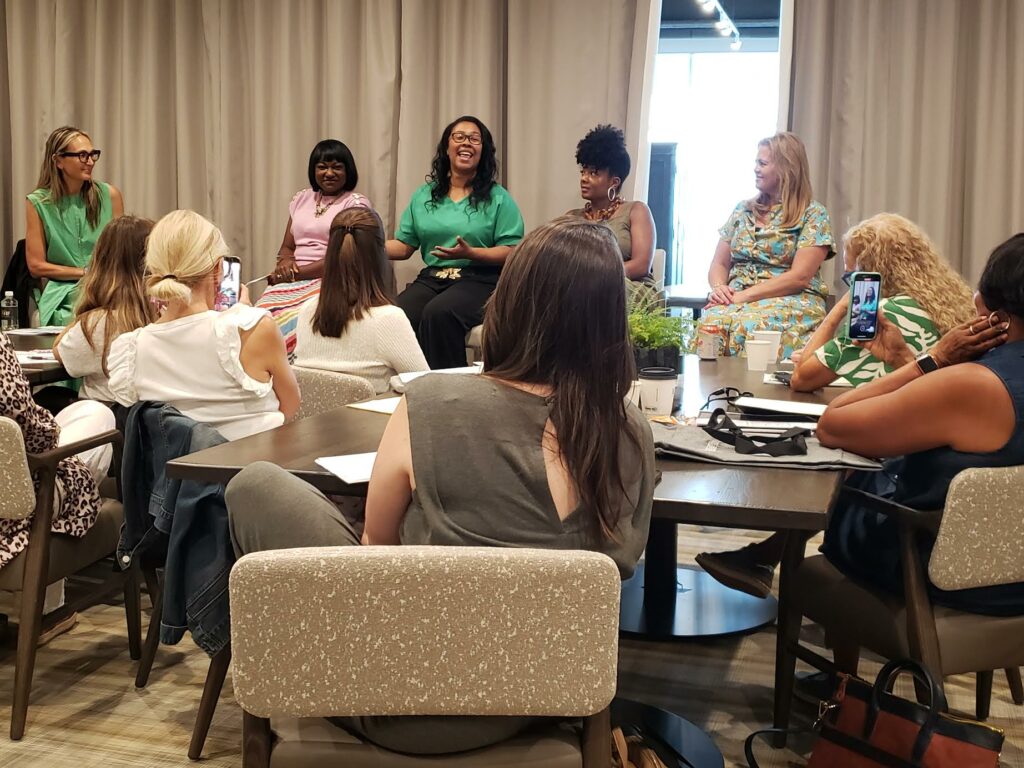
The discussion was part of Summer School, a two-day event held in High Point in late July intended to help interior designers and other creative professionals craft a brand story and public relations strategy. Summer School was presented by Saurit Creative and HPxD.
Whether you work with a business coach, map it out on a whiteboard or meditate till it becomes clear, having a sense of yourself — and your business — will allow you to set goals, decide what projects and collaborations are worth your time, and determine how you spend limited marketing dollars.
“When I was ready to build my brand story, it was clear and concise, but it’s also in alignment with where I was going and who I am,” Cloud said. “And that has served me so well. It is that filter for my decision-making and every step that I take.”
The panel, made up of women with widely different businesses and approaches to their work, offered plenty of tips for improving your visibility.
And as you consider their ideas, keep this overarching guidance in mind: Before you undertake any marketing efforts, think about why you want to increase your profile. Do you want to attract more clients? Better paying clients? Become a brand ambassador? If something will help you accomplish one of your goals, do it. If not, graciously pass on it.
Here’s some more of what they shared:
* Set aside a certain portion of your budget for marketing. For the panel, that’s about 10% to 15% of their annual budget. But when you’re building your business and doing most aspects of it yourself, it can be hard to hire outside help, said Duce, an interior designer, founder of the Vacation Rental Designers Collective and co-creator of the Vacation Rental Design Summit.
And yet hiring a PR firm or someone to assist with a website makeover can eventually pay for itself and allow you to concentrate on what you do best.
“I actually feel emotional talking about. …It’s taken me a lot of years to figure out that I could get help,” Duce said. “I wanted to save money. I thought, ‘I can do it myself. I can piecemeal it.’ … It was a huge decision for me (to hire PR help) because I felt like I was giving away money. … But then I decided it’s going to be OK. And I’m very happy now. I actually sleep a bit better.”
* Be flexible and open. Having a plan is great, but be open to opportunities that arise. “When an opportunity rolls in that I wasn’t expecting — and it always does — you’ve got to be ready. You’ve got to flex with the opportunity, even when it doesn’t match your planned spreadsheet for the fiscal year,” Luckett said.
Duce shared a story of how being open to new, unexpected opportunities has worked for her. A friend asked her to do a quick video tour of the Hooker Furniture showroom last High Point Market, pointing out trends and offering tips. That video quickly made its way to executives at Star Furniture, a large chain based in Texas.
Before Duce even left the market, she had a lunch set up with the president and vice president of the company. She did a little research and discovered that their trade program, well, left a lot to be desired. So, when they asked her what they could be doing better to attract interior designers to their stores, she was brutally honest. Now she is the retailer’s design collaborator, promoting the stores and working with the team to remake the entire trade program.
* Use showhouses strategically. Showhouses are costly, so, if you agree to participate in one, whether as a brand or an interior designer, use them to your best advantage. Don’t rely on the showhouse organizers for PR, or even photos, the panel said. Hire your own photographers, videographers and even drones to ensure you get the kind of images you want. Promote your participation on social media, on your website, in interviews.
If you’re a designer, secure brand partnerships that will benefit you both. Get to know your brand partners. Ask them what’s worked for them in the past and what hasn’t. Show them the ways you’ll promote their products.
And when it comes to the project itself, give it your all. When Cloud was offered a hallway in a Junior League of Greensboro designer showhouse, she wasn’t super excited. But she decided to embrace that hallway and is still benefiting from the publicity it brought her firm.
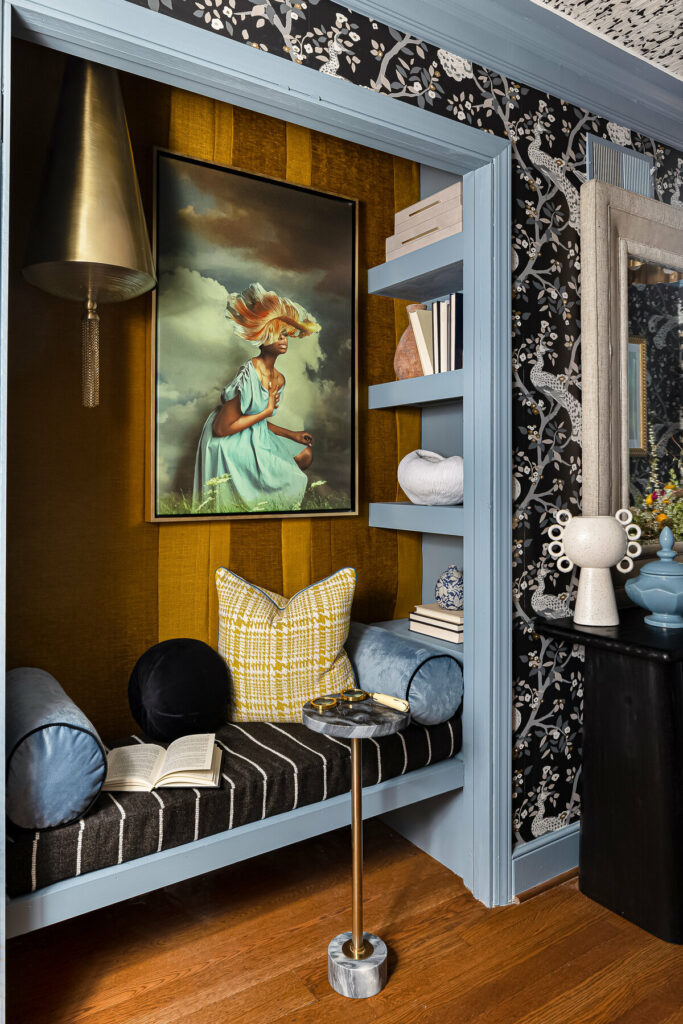
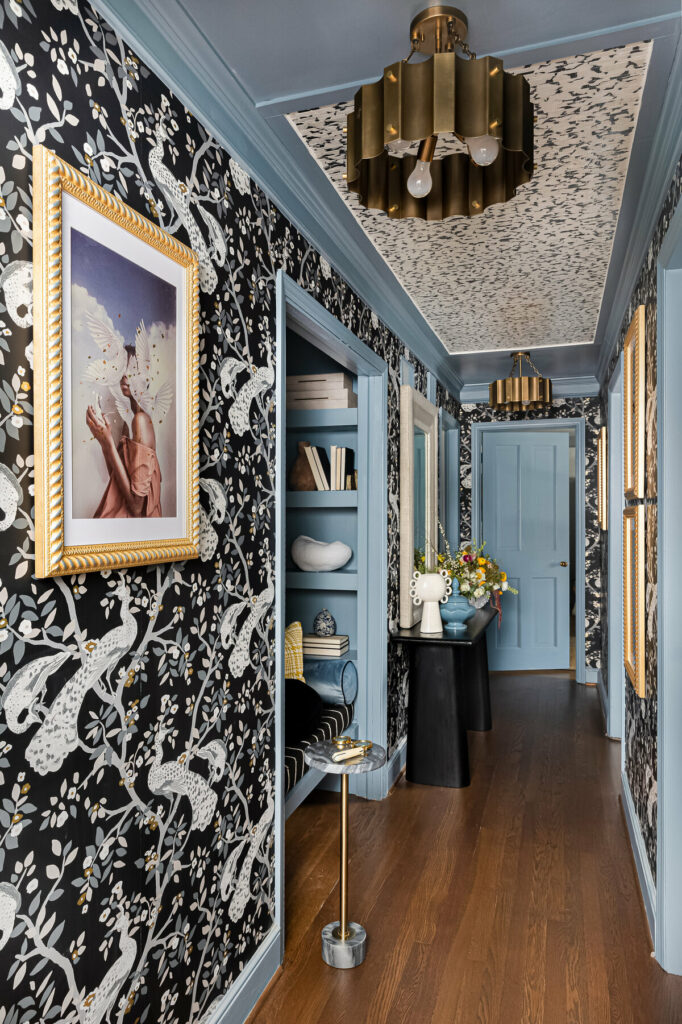
“I said ‘yes’ to a lot of showhouses that year because I wanted to increase my visibility,” she said. “… I was ready to have projects where I could do what I wanted from a creative standpoint, and I was very confident in my approach to design. … I was ready to turn it up a notch. And what better story would there be than me taking that hallway and just going nuts? It was so unexpected and so unique. (Taking on that hallway) was probably one of the best career decisions I’ve made from marketing and visibility standpoint.”
And just because the showhouse closes doesn’t mean you can’t continue to promote that work. You can find ways to highlight your participation literally years afterward to get the best return on your investment.
For instance, Cloud is expanding her business by hosting live events inspired by her design philosophy and plans one in August that takes its aesthetic cues from a showhouse she participated in last year. “I milk these things for as much as I can,” she said with a laugh.
* Nourish strategic partnerships. If you’re a designer who wants to build your relationship with brands, the best place to start is with companies you already know, love and use frequently, the panel said.
And then give them a compelling reason to work with you. “I go in and say, ‘This is the volume we’re doing, this is what I need, this is how I want to work with your company and this is how I want to elevate our relationship,” Duce said. “That’s how I started most of my brand relationships,” including one with Polywood.
“I’ve put Polywood in every single project I’ve ever done since 2015. It took them a long time to fall in love with me,” she said with a laugh.
And again, find ways to leverage those deals. In the best partnerships, both sides (the designers and the brand) will look for every way possible to promote each other on their websites, via social channels and through other media.
* Invest where your clients are most likely to be. Social media gets a lot of attention, but some designers find that social doesn’t actually funnel much business their way. Luckett is among them, so she puts her resources into her website and search optimization because that’s how most clients find her. “I make sure I stay at the top of results for ‘interior designer Charlotte,’ ‘best interior designer Charlotte,’ ‘Black interior designer,’” she said. “I’m very attuned to the fact that this is how people are finding me, and I need to focus on that.”
* Promote yourself to podcasts. Speaking at a conference or participating in a panel discussion at a furniture market can be great for your career, but nerve-racking if you haven’t often done it. Duce suggests getting your feet wet on podcasts. “It takes the pressure off and gets your message out,” she said. “It lets you get more comfortable being interviewed, talking and answering questions.” And, she noted, podcasts always need fresh content and guests. Similarly, you can pitch yourself to local TV and radio stations, who are often receptive to short segments on topics like interior design and gardening.
* Be relentless in achieving your goals. Carmona, a home and garden expert and DIY influencer, maps out her marketing strategy literally years in advance.
When she was rejected to be part of the Design Influencers Tour during the High Point Market in 2018, she created a yearslong plan to position herself to be accepted. She redesigned her website, including a page that she created specifically to use in her pitch to tour organizers. Among other steps, she also planned social posts with the tour in mind. Her efforts paid off: She was named to the tour for the spring 2023 market. She wasn’t done yet. Next, she set her sights on being part of the Design Influencers Conference. “So, while I was on the tour, I didn’t just do my job. I did it professionally. I did it quickly. I did it on time,” she said. “And I spent time one-on-one, networking with leaders so they knew who I was and what I could do.” The next year, she spoke at the conference.
